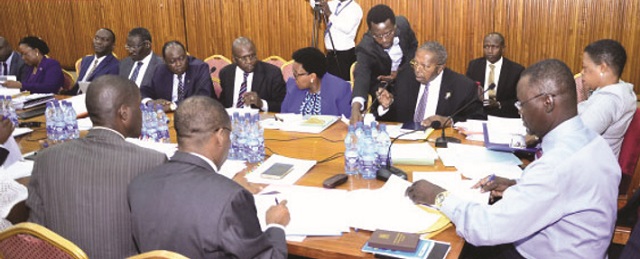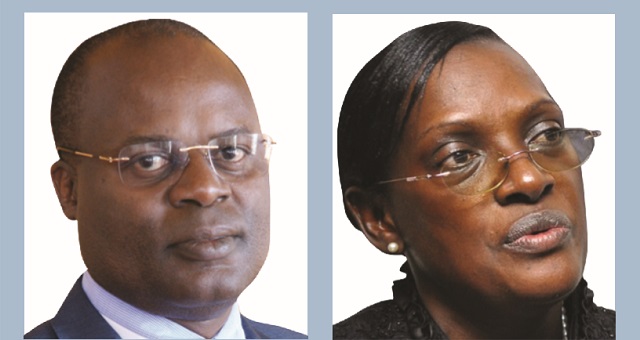
“A lot of people are talking but do they stop and imagine what would have happened if BoU had not intervened and these banks had gone burst?” asked one of the insiders at BoU, “so, the focus of the debate and parliament should be on the mistakes of these banks and how to make sure those who made them are held accountable.”
Aiming to punish BoU officials for intervening, the insider added, is punishing them for doing their job.
An official at the central bank also explained to The Independent that what many people do not realise is that intervening in a bank is a delicate process. “These sorts of things have to happen fast enough otherwise irreparable damage will be caused,” said the official.
But another side admits that in the process of performing its roles, BoU officials violated the law and that as a result BoU is exposed to serious risks.
Indeed some shareholders of some banks; like Sudhir Ruparelia, the former proprietor of Crane Bank and the former proprietors of NBC are already suing BoU.
Their cases are largely based on allegations that BoU violated the FIA in the process of liquidating their banks. According to the FIA, BOU is obliged to take certain steps before selling off assets of a financial institution.
The FIA for instance demands that the sale of assets of a bank taken over by BoU should be done in a way that results in marshaling the greatest amount of the financial institution’s assets and protects the interests of depositors including their interest in the unprotected deposit amounts.
It should also minimise costs to the Deposit Protection Fund and losses to other creditors, and ensure stability of the financial sector.
In determining the amount of assets likely to be realised from the financial institution’s assets, the FIA states that the receiver shall, (a) evaluate the alternatives on a present value basis, using a realistic discount rate, and (b) document the evaluation and the assumptions on which the evaluation is based, including any assumptions with regard to interest rates, asset recovery rates, inflation, asset holding and other costs.
In the case of Crane Bank, BoU did not do any of this – at least according to presentations made before COSASE by BoU officials, former shareholders of Crane Bank and officials from dfcu bank, which acquired the bank in question.
When the then Executive Director Supervision, Justine Bagyenda, made a decision to sell Crane Bank, she just picked her phone and called the then Managing Director of dfcu, Juma Kisaame and invited him to her office at BoU.
Kisaame told the committee that dfcu was then granted access to Crane Bank assets between November 30 and December 20 2017.
On December 9, BoU then invited dfcu to bid for the assets and liabilities of Crane Bank. Dfcu then submitted its bid on December 20.
It was not until January 13 that a report prepared by PriceWaterHouseCoopers on behalf of BoU came out.
According to the law, this is the document BoU should have prepared before engaging any buyers of Crane Bank assets. BoU should then have based on this document to resolve Crane Bank.
Instead, having granted access to dfcu bank for it to do its own valuations and due diligence, BoU then relied on the valuations of dfcu to move to it assets of Crane Bank.
The dfcu team told the committee that when they did the due diligence, they discovered a number of non-performing assets, questionable loan approvals, poor credit administration and collateral that was given out with no evaluation of assets.
However, in their 2017 prospectus for investors, dfcu noted that the Crane Bank deal was one of the best they had inked in years.
These events have confirmed what the shareholders of Crane Bank have always claimed; that the assets of Crane Bank, which they put at Shs. 1.8trillion were undervalued before being sold to DFCU for Shs200 billion.
In the past, while defending BoU, Deputy Governor Louis Kasekende, who was at the centre of the transaction has said that this kind of thinking betrays a lack of understanding of the means through which failed banks are resolved by bank regulators.
“It has been alleged that Crane Bank was sold by BoU for a fraction of the value of its assets, ignoring a fact that a bank has liabilities, such as deposits, as well as assets,” Kasekende said on April 6, 2018.
“When Crane Bank was resolved by the BoU, the value of its assets was much less than the value of its liabilities.
Consequently, Crane Bank had a negative net worth of approximately Shs260 billion; it was insolvent.”
He added: “BoU did not sell Crane Bank, because no one would have bought a bank with a negative net worth of this magnitude. Instead, the BoU carried out a purchase of assets and assumption of liabilities transaction (P&A) with DFCU. DFCU assumed most of the liabilities of Crane Bank, including all of its deposits and acquired assets of equivalent value.”
The problem with this explanation now is that it has become clear that BoU had not carried out a valuation of Crane Bank assets by the time it sold it to dfcu. Indeed, information provided by dfcu also shows that the assets of Crane Bank were undervalued.

 The Independent Uganda: You get the Truth we Pay the Price
The Independent Uganda: You get the Truth we Pay the Price



Out of interest is central banks problem closing the banks or is it selling them improperly and if it is the latter is the 5tn pay up fair or not?